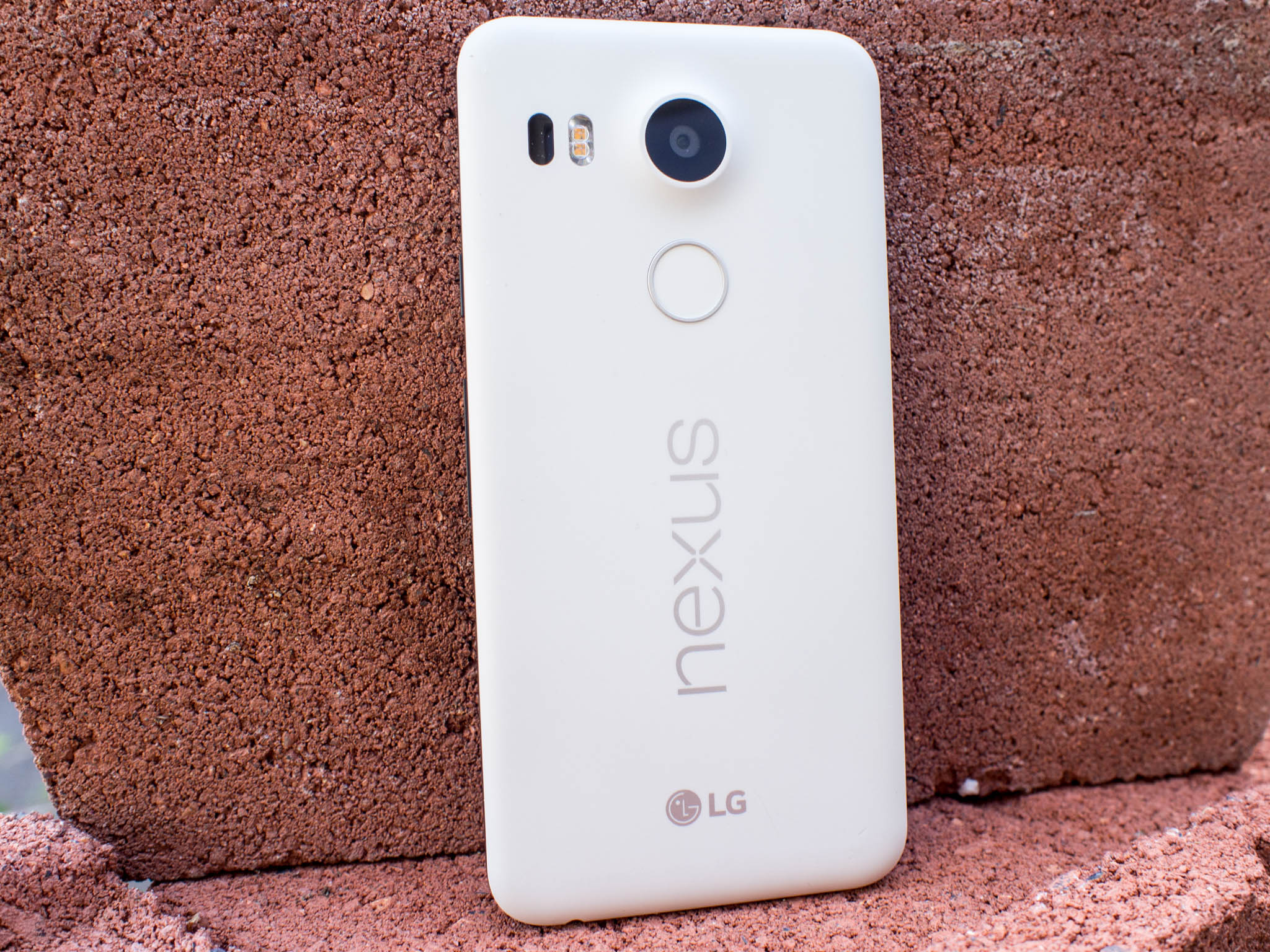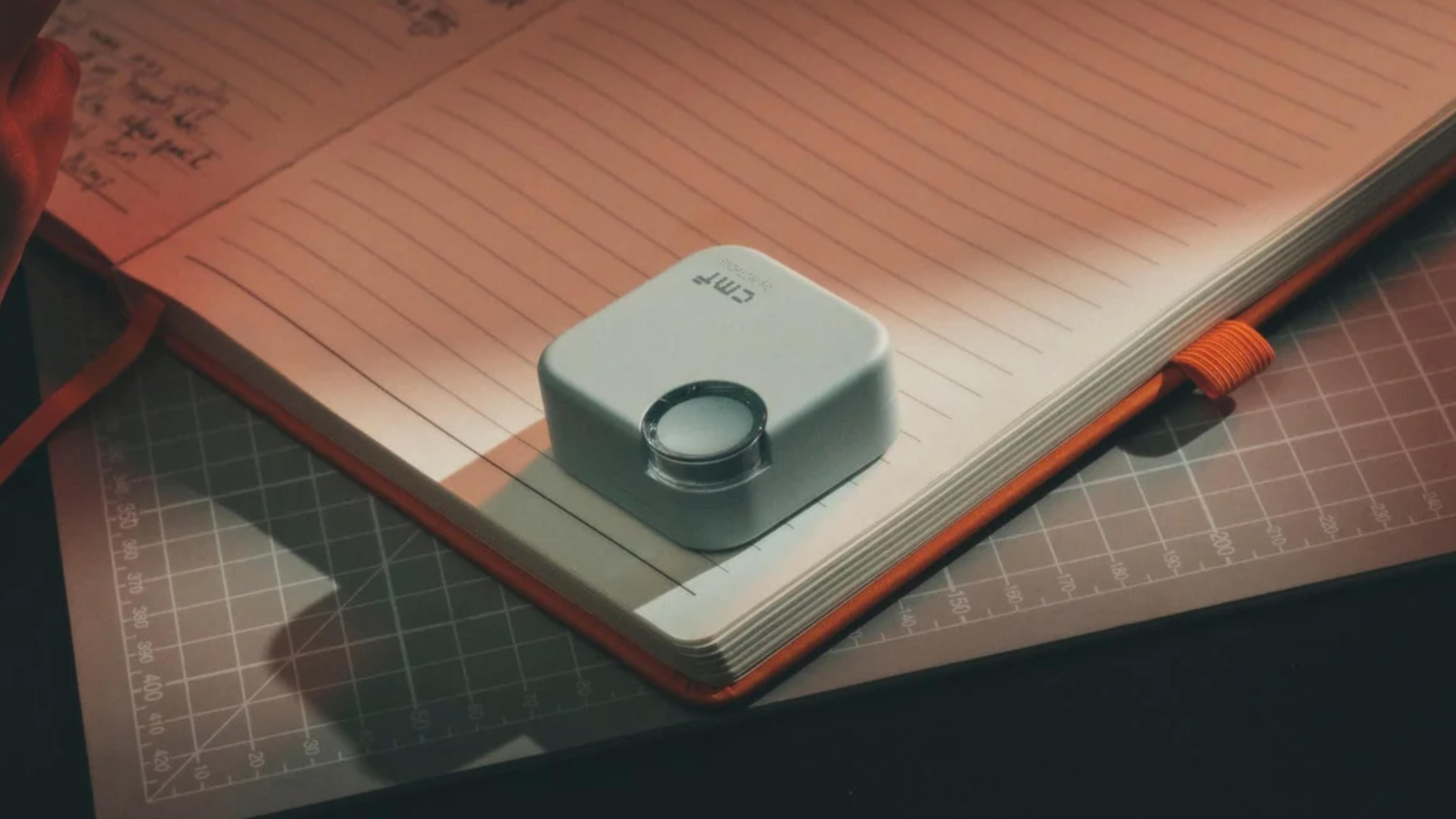For a lot of Nexus fans, the original LG Nexus 5 is like a folk hero. The stories we tell after the phone has been replaced and shelved with the other mobile relics are about this amazing superphone that changed the industry with its impressive specs and remarkably low price tag.
And as is often the case with folk heroes, reality is a little different. The Nexus 5 was a decent phone, but the price tag was the most interesting thing about it.
Since the launch of the original Nexus 5, the $300 to $400 price range has exploded with a number of compelling options. Google took a year off from this space with the launch of the Nexus 6, but this year we've got two Nexus phones, and Google clearly has aimed one of them at that sweet price point. The Nexus 5X is Google and LG working together to create a successor to one of the most popular Nexus phones we've ever seen, with the latest version of Android powering this $380 nostalgia machine. The big question is whether these two companies were able to push this new Nexus 5 from mediocre to exceptional to compete in the market they helped create.
Here's our review.
About this review
I (Russell Holly) have been using the Nexus 5X for 10 days, split evenly between Google's Fi network and Verizon Wireless in Baltimore and Hurst, Texas. This Nexus 5X, which was provided by Google, is running build MDB08G, which is Android 6.0 for those who don't speak fluent build number.
During most of the review period, a Moto 360 2015 was paired to the phone.
A bigger nexus 5
Nexus 5X hardware
Much like its predecessor, the Nexus 5X is one of the most comfortable phones to use with one hand to have been released this year. Despite being slightly wider and taller than the Samsung Galaxy S6 and S6 edge, the Nexus 5X weighs less and doesn't require a case to avoid a slippery glass back. The impressively light construction and soft touch coating on the back give the phone a great overall feel. It's not quite a grippy or as comfortable to hold as the original Nexus 5, but it's close enough that fans of this design will appreciate the way the phone feels in the hand.
Taking it out of the box the first time brought back memories of phones that shipped with the battery removed (a rarity these days), and compared to just about every other major smartphone release this year the Nexus 5X weighs noticeably less. There's no denying how plastic the phone feels, right down to the lack of ceramic volume and power buttons, but it doesn't quite cross the line into cheap-feeling. The phone doesn't give or flex when pressure is applied, but our back cover already has some noticeable scuffs and scratches from day to day use, as well as a dent in the speaker grille. It's solid, but it's hard to escape how disposable this phone feels due to its weight and build.
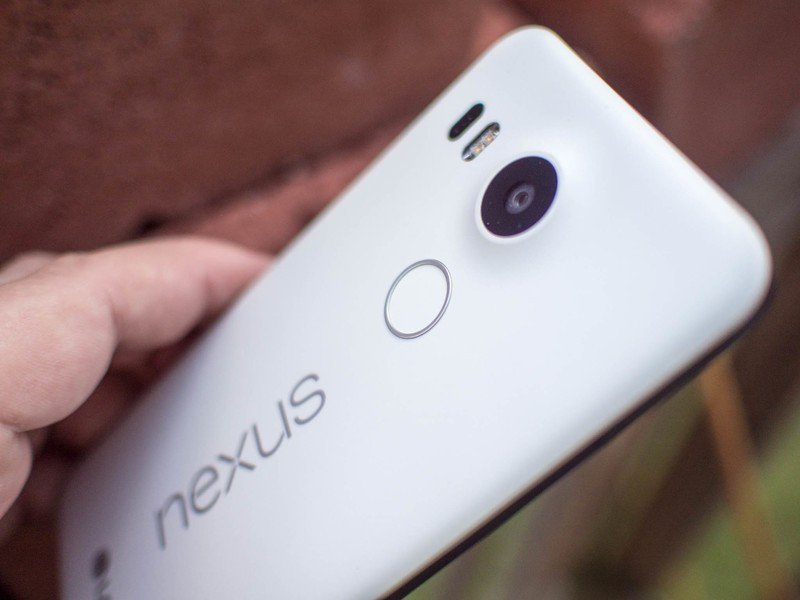
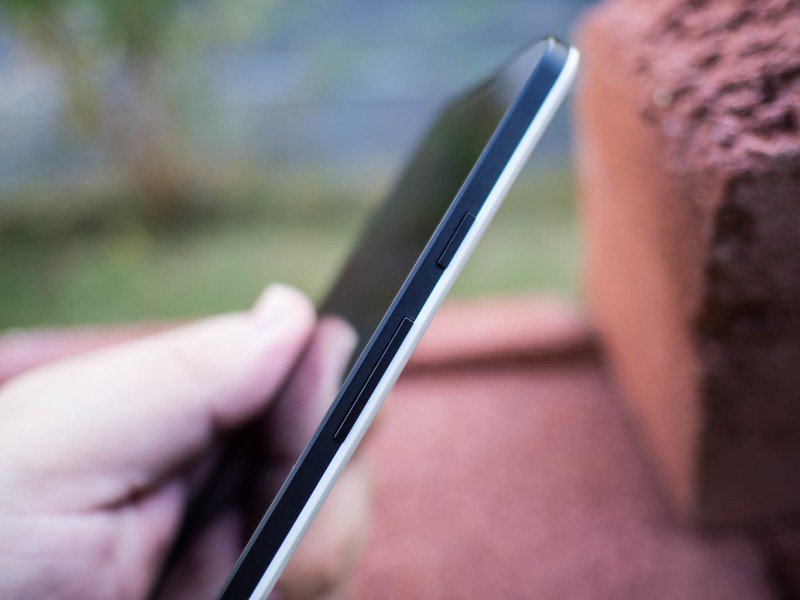
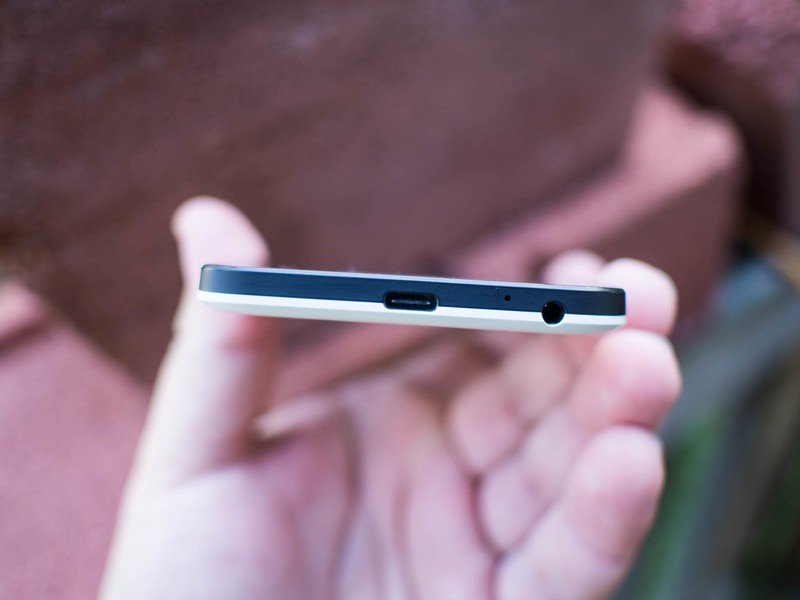
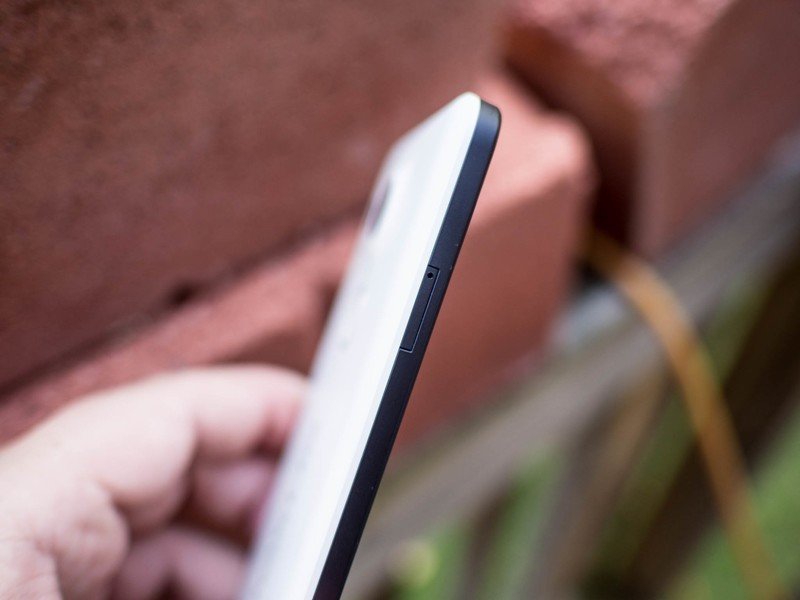
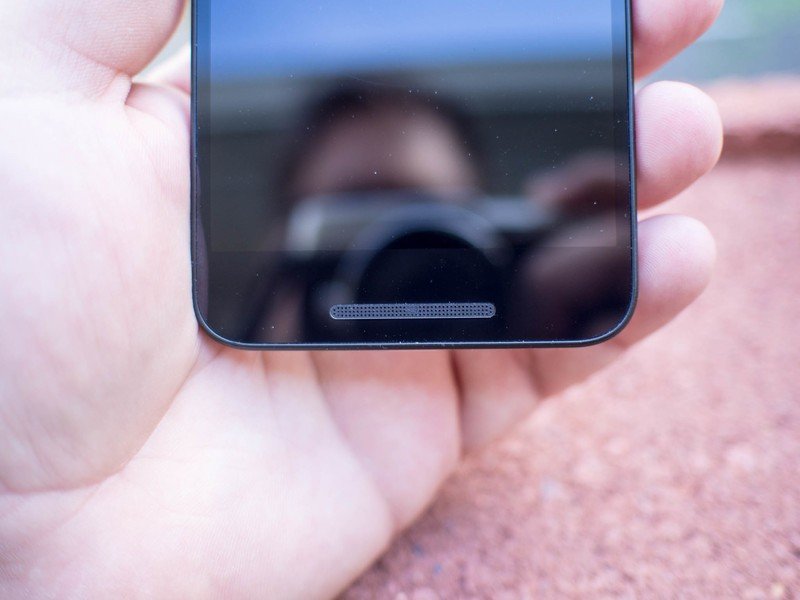
The front of the Nexus 5X couldn't be more plain, which is great. No logos, no buttons, just a pair of speaker grills, a camera, and a sheet of Gorilla Glass 3. The plastic bezel just barely climbs over the glass to protect those of us who put our phones face-down, but otherwise it's a flat black slab until you wake the display. Despite the pair of speaker grills, sound will only come out of the bottom when playing music or talking with speakerphone on. The speaker in the top grill is only for calls, and like the bottom speaker is neither particularly loud nor particularly high quality. They will get the job done, but LG won't be winning any audio quality awards from the speaker or the headphone jack on this phone. (We'd put it on part with the Galaxy S6, which is not that much of a good thing.)
LG Nexus 5X hardware specifications
| Category | Specification |
|---|---|
| Operating System | Android 6.0 Marshmallow |
| Display | 5.2 inchesFHD (1920x1080) LCD at 423 ppiCorning Gorilla Glass 3Fingerprint- and smudge-resistant oleophobic coating |
| Rear Camera | 12.3MP1.55 μm pixelsf/2.0 apertureIR laser-assisted autofocus4K (30fps) video capture120 fps slow motion video captureBroad-spectrum CRI-90 dual flash |
| Front Camera | 5MP1.4 μm pixelsf/2.2 aperture |
| Processors | Qualcomm Snapdragon 808 Processor, 1.8GHz hexa-core 64-bitAdreno 418 GPU |
| Memory & Storage | RAM: 2GB LPDDR3Internal storage: 16GB or 32GB |
| Dimensions | 147.0 x 72.6 x 7.9 mm |
| Weight | 136 g |
| Sensors | Fingerprint sensorSensor HubAccelerometerGyroscopeBarometerProximity sensorAmbient light sensorHall sensorAndroid Context Hub |
| Ports | Micro USB Type-C3.5 mm audio jackSingle Nano SIM slot |
| Battery | 2,700 mAh |
| Other | LED notification light |
LG also won't be winning any display quality awards, which is to be expected with a mid-range phone. The 1080p LCD display in the Nexus 5X gets the job done indoors, but it's borderline unusable the moment you step into the sun. It's a typical low-end LCD screen, which is a little frustrating after having used the exceptional LCD panel in the Moto X Pure Edition. It's a mediocre experience, but not an altogether bad one.
It probably wouldn't have killed Google or LG to put wireless charging in this phone.
Outside of the camera bump and the fingerprint ring, the back of the Nexus 5X is equally plain. The Nexus logo stands out more on the white version than the mint or black versions, and thankfully it's a part of the casing so you won't have to worry about letters falling out over time. The fingerprint ring is raised just enough that you'll quickly notice it when blindly looking for it with your finger, but not enough to feel out of place when holding the phone after it has been unlocked. This is especially true if your find yourself resting your finger on the bottom of the camera bump, which is high enough on the phone that you can lay the Nexus 5X on its back and use it without a lot of rocking around.
The USB-C and 3.5mm ports on the bottom of the Nexus 5X are placed well for anyone holding the phone horizontally, and like most of the examples we've seen so far the design of the USB-C port limits the kind of unnecessary wiggling that could damage the internal stem if you were to drop the phone while it was connected. You're unlikely to be in a position to drop the Nexus 5X while it is connected to the included power cord anyway, since it's noticeably shorter than most cables we get from other phones, and because it's a C-C cable — that is both ends are the new reversible USB-C. So if you want to plug it into a computer or a different charger, you'll need an A-C cable.
There's a lot to like about the Nexus 5X. While it's ridiculous to think of something with a 5.2-inch display as a "small" phone, that's basically what the Nexus 5X is. It's a small, inexpensive phone running the purest form of Android. It probably wouldn't have killed Google or LG to put wireless charging in this phone or include a second cable in the box like Huawei did with the Nexus 6P, but out of the box this experience isn't bad.
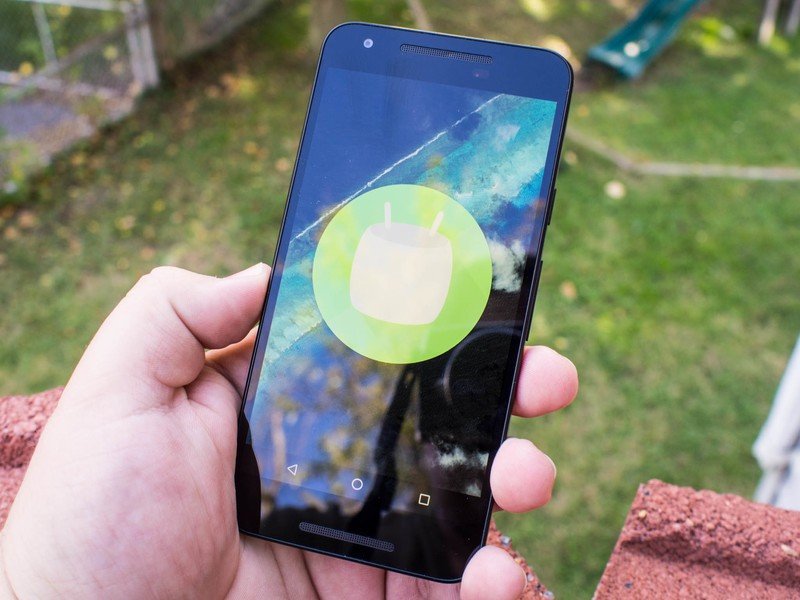
Pure google, for better or worse
Nexus 5X software
Like every Nexus before it, the 5X is rocking Google's Android, and this year it's all about Marshmallow. Dozens of new animations, native support for lots of new hardware, and some basic changes to how things like notifications work. Android 6.0 brings a lot of polish to the massive overhaul that was Android 5.0, and that means there's a lot of little things to appreciate. Perhaps more important, the OS itself feels a lot more complete.
Read More: Our Android 6.0 Marshmallow Review!
Despite being Google's vision for Android, the Nexus lineup this year doesn't go out of its way to support every new feature Google built. Adoptable Storage, for example, doesn't mean there's going to be a microSD slot for you to bump your maximum capacity. The Nexus 5X does support things like "OK Google" when the screen is off, Ambient Display for when you want to glance down at your phone and see what is going on, and a clever camera launch shortcut you can activate by double tapping the power button. There are a lot of clever ideas here that really make the Android as a whole feel more aware and capable.
Unfortunately, none of them work particularly well on the Nexus 5X.
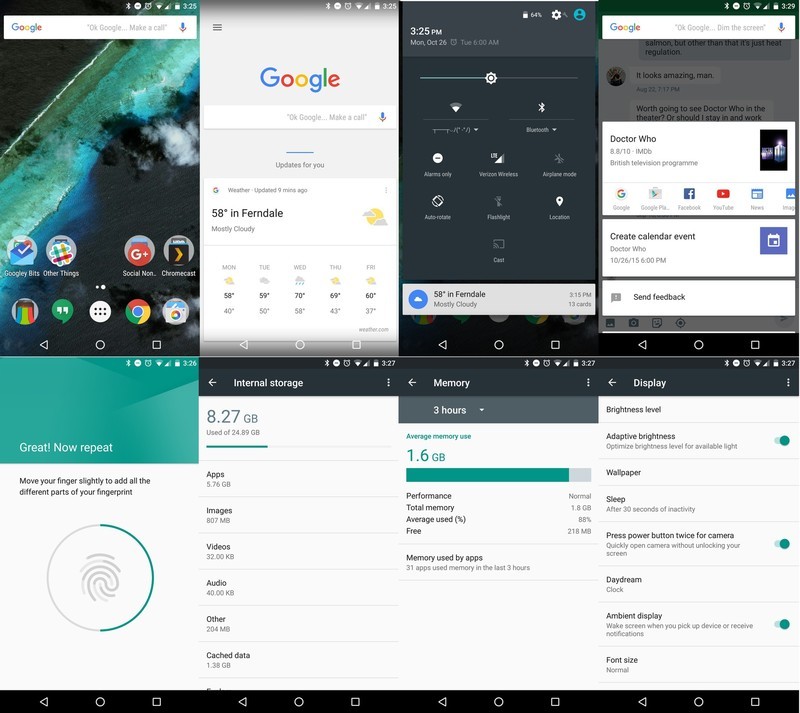
The "OK Google" command when the display is off works fairly well when the 5X hasn't entered Doze mode, but it's nowhere near as good at waking up from a distance as the Huawei Nexus 6P or the Moto X Pure Edition. The same goes for Ambient Display — occasionally flashing notifications on the screen as it sleeps — which works about half of the time it works on the Nexus 6P when sat side by side with identical apps and settings. It feels like the new Sensor Hub Google put in these new Nexus phones hasn't been tuned quite as well as the Huawei version, so it's entirely possible this experience will improve over time. For now, it's almost easier to turn these features off.
Double-tapping the power button to launch the camera is not a Sensor Hub feature, so there's no excuse here. The implementation here is just plain broken. When you double tap the power button with the screen off, there's around a 15 percent failure rate on the 5X (and only the 5X). While some of that can be chalked up to user error, watching the display freak out and take 20 seconds to actually launch the camera is not an example of failing to actually press the power button twice. If you try this shortcut while the display is on and the phone is unlocked, the screen re-locks because you just pressed the power button and pulls you out of your current workflow. You can't unlock the phone from the camera, so you have to press the home button and unlock the phone before you can do anything with the picture you just captured. This experience is just plain bad, but if Google can fix it this shortcut could be great.
Despite phones already landing on doorsteps, the software doesn't feel fully baked.
The rest of the experience is Android as you'd experience it on any other Nexus phone. The grid for Google's launcher is five rows and five columns now, which means you can fit more on your home screen but also means icons look a little tiny compared to some of the other phones using Now Launcher. This is the one place in the interface you notice the UI isn't quite as nice as it is on the Nexus 6P, and it's only something you're going to notice if you're holding the two phones side by side.
Software on the LG Nexus 5X feels a lot like the software on the original Nexus 5, which is to say despite phones already landing on doorsteps the software doesn't feel fully baked. There are a lot of things that work really well, and look amazing thanks to Marshmallow's new animations, but there's clearly still work to be done here.
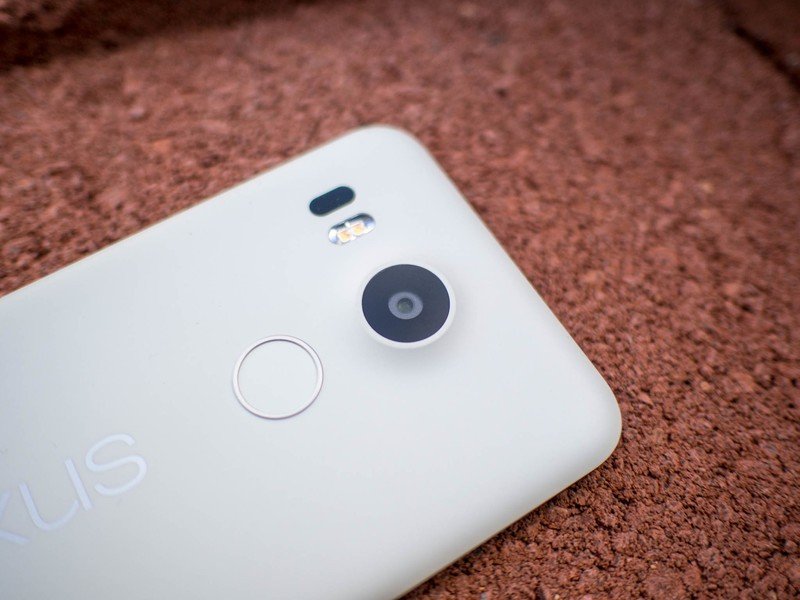
Truly exceptional, most of the time
Nexus 5X camera
There is a lot to love about Google's new camera, both with the sensor and with the app driving it. We've head a solid year of companies promising solid cameras in smartphones and actually delivering, but the Nexus 5X and Nexus 6P are something special. The software is dead simple, the pictures you get are fantastic, and the amount of work you put in to get the shot is basically nonexistent. Google has finally delivered a Nexus phone with a good camera, and they were so excited about it they did it twice.
The 12.3-megapixel sensor on the back of the Nexus 5X captures a fantastic amount of color and a respectable level of detail, and impressively it does so via autofocus a vast majority of the time. The camera doesn't handle macro shots particularly well without a tap to focus, but that is true of most smartphone cameras so it's not a big deal. A quick swipe on the camera app flips to video mode, where you can grab 120FPS slow motion or 4K video with little effort. With both video modes, the lack of OIS didn't cause any noticeable problems. 4K video would obviously be better with OIS, but what you get out of this camera is more than good enough for most folks.








Where this camera truly stands out is low-light capture, and in this regard Google has done an incredible job. This is by far the best low-light camera we've used this year, and it works exactly the way Google said it would. This camera pulls light in from basically nothing, and routinely gets you the shot you want.
Unfortunately, on the Nexus 5X the camera app isn't quite as fluid and snappy as it should be. The camera app regularly hands when flipping from still photos to video, and when capturing photos with HDR+ enabled it can take anywhere from 2 to 8 seconds to fully process the photo you've captured. In some cases there's even a slight delay between the shutter button and actually capturing the image, which makes shooting a moving target a little complicated. This makes capturing multiple photos something of a drag as well if you have HDR+ on, and since it's set to auto out of the box there's a good chance you'll run into this at some point. It's an unfortunate trade off for that fantastic camera, but rather than it be a deal-breaker it's just something you need to keep in mind when using the camera.
Genuinely enjoyable
Nexus 5X experience
It's weird to have both a Nexus 5X and Nexus 6P sitting in front of you, knowing one is noticeably faster and generally more capable, and yet feel compelled to reach for the Nexus 5X every time. LG has delivered a lightweight, snappy Nexus that flies through day to day tasks but is clearly limited in a handful of important ways. Nothing about the phone feels slow when opening apps and flipping between tasks most of the time, but occasionally having 2GB of RAM means apps need to re-cache when you switch to them. This is most noticeable when using just about any app after using the camera app, which offers its own usability challenges as we've pointed out.
Using the Nexus 5X is fantastic if you're a fan of smaller, lighter phones. It all but disappears in your pocket, and the soft-touch back makes walking around and using the phone with one hand a lot easier than most. It's light enough that a case adds noticeable bulk, and since the cases we've tried so far for the phone haven't been particularly great the Nexus 5X has been naked for most of this review. Which is good, it's good that the phone doesn't feel like it needs to be in a case to survive day to day use. That's not something we can say about most phones right now, so it's worth making it clear this is a good thing.
This is roughly the same experience we get out of the LG G4 and Moto X Pure Edition, and it's happening with 300mAh less than either of those phones.
Nexus Imprint is the new gold standard for fingerprint scanning. You set it up with only six presses tot he sensor, and the unlock is easily as fast as the other high-end sensors right now. The placement is perfect, the execution is fantastic, and if Google can get developers to actually support Nexus Imprint for authentication in their apps this will become the most useful authentication system on any phone. It's a positive start, which is important since Google has taken a little while to implement this feature natively.
Battery is always one of the biggest questions when it comes to any phone, and with all the changes Google made to Android with the 6.0 release that focus specifically on battery there's an expectation to be met here. The Nexus 5X routinely went from 6 a.m. to 10 p.m. on a single change, with between 15 percent and 20 percent battery remaining. This is roughly the same experience we get out of the LG G4 and Moto X Pure Edition, and it's happening with 300mAh less than either of those phones. While I'm sure everyone would be happier with a 3,000mAh battery in this phone, knowing you can get through a full day with less is an impressive example of how much work Google put into Android for this release.
Despite the speakers being somewhat lacking on this phone, the microphones do a spectacular job capturing audio and filtering out background noise. The three microphone array on this phone is fairly standard, but it's implemented well whether you're speaking to someone else or you're just using your phone to capture a conversation to transcribe later.
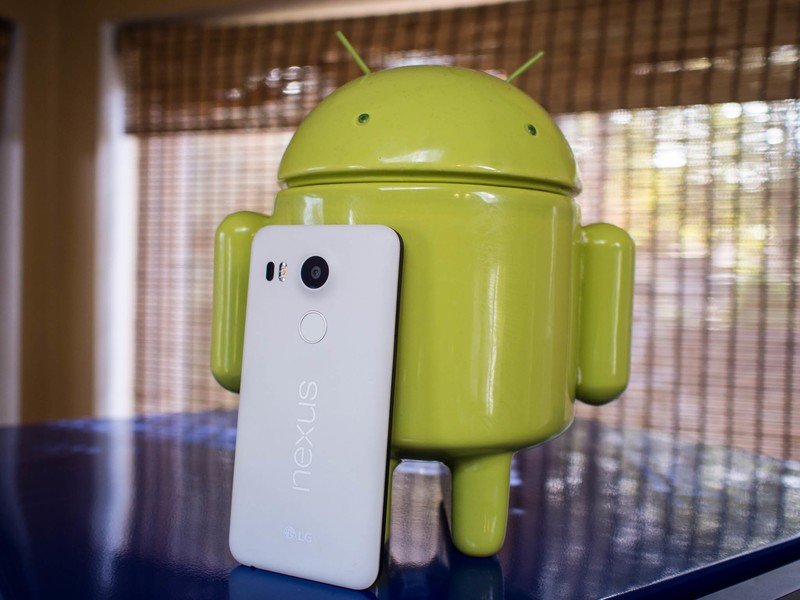
Nexus 5X the bottom line
When it works, using the Nexus 5X is a lot of fun. If Google can reduce these failure points we've found in using the phone for the last week, the overall quality of this phone will be improved dramatically. If it feels like this gets said a lot about Nexus phones, that's because it does. Lots of folks remember the original Nexus 5 for what it was at the end of its lifespan — ignoring the camera, of course — but out of the box the experience was lacking.
Google has delivered a lot of great things with this new Nexus duo, but it couldn't be more clear that the Nexus 5X is the lesser of the two. It's a mediocre experience with some amazing high points, and when you balance that out against a $379 price point you're getting what you pay for. The $300 to $400 space is all about picking your high points and balancing them against the compromises made to reach that price, and Google delivered a fantastic camera and an exceptional fingerprint casing in an amazingly light package that stumbles every once in a while when you use it. It could be better, but it's already pretty good.
Should you buy it? Probably not.
Google's Nexus 5X is $379 for the 16-gigabyte model, which you shouldn't buy because it's 2015 and 16GB base storage for a smartphone is unacceptable. (Let that rational part of your brain take over for a minute.)
If you jump up to the 32GB Nexus 5X you're now paying $429, which is only $70 away from the 32GB Nexus 6P. If you haven't read our Nexus 6P review yet, you really should. It is in every way $70 better than the Nexus 5X, and your money would be better spent on an experience that will last you a while and be enjoyable the whole time instead of hoping Google improves things over time. Even if they do, the Nexus 6P will still be a better way to spend your money.
Bonus!!!
